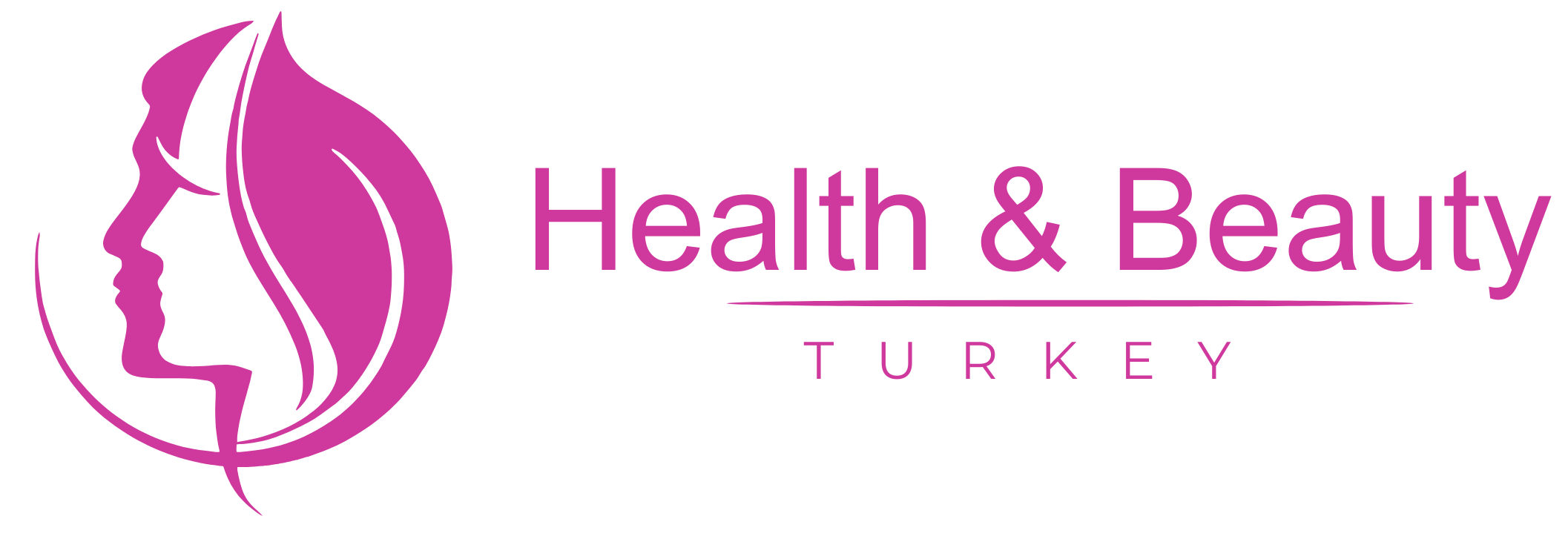Introduction
The navel, that unique mark that carries the imprint of first life, can be a source of beauty inspiration or a cause for concern for some. The popularity of umbilical hernia surgery is significantly increasing, especially among those wishing to improve their overall appearance and boost their self-confidence. Turkey stands out as a leading global destination in cosmetic surgery, where its highly experienced doctors combine modern techniques with excellent care to deliver results that exceed expectations.
At “Health & Beauty Turkey”, we fully understand that the decision to undergo any medical procedure, no matter how simple it may seem, can be accompanied by a feeling of hesitation or even anxiety. Concerns about potential complications are a natural part of this journey. For this reason, we place your safety and satisfaction at the forefront of our priorities, ensuring a supportive and comprehensive environment, backed by the latest safety measures, including “Health Tourism Insurance Against Complications” to guarantee your complete peace of mind.
What is Umbilical Hernia Surgery?
Umbilical hernia surgery, also known as “navel reshaping” or “navel repair,” is a surgical or non-surgical procedure aimed at changing the shape, size, or position of the navel. This can include correcting a protruding, deep, misshapen navel, or one that has changed as a result of previous abdominal surgeries, pregnancy, or significant weight loss.
Reasons and Motivations Behind Umbilical Hernia Surgery
There are various reasons that lead individuals to seek navel beautification:
- Aesthetics and the Desire for an Ideal Appearance: The navel is an integral part of the overall symmetry of the abdomen. Some may feel that their current navel shape does not align with their aesthetic expectations, especially with the increasing focus on flat and sculpted abdomens in fitness culture.
- Post-Pregnancy Changes: Hormonal changes and rapid abdominal growth during pregnancy can lead to skin stretching and changes in the navel’s shape, making it appear wider or misshapen.
- Changes After Significant Weight Loss: After a successful weight loss journey, some may experience sagging skin in the abdominal area, affecting the navel’s appearance.
- Congenital or Acquired Deformities: In some cases, the navel may be born with an abnormal shape, or it may be affected as a result of previous injuries or surgeries (such as gallbladder removal or other abdominal surgeries).
- Scars and Deformities After Surgery: Some surgical procedures may leave scars around the navel or affect its original shape.
- The Desire to Boost Self-Confidence: Improving the appearance of any body part, including the navel, is an important factor in enhancing self-confidence and psychological comfort.
Latest Developments in Research Related to Navel Anatomy and Function
Although the navel appears simple, its study involves precise anatomical and functional aspects. Recent research indicates a deeper understanding of how the tissues surrounding the navel are formed, and how factors such as skin elasticity, fat tissue thickness, and the underlying strength of abdominal muscles affect its final appearance. Medical imaging techniques are also evolving for a better understanding of the navel’s internal structure, helping surgeons plan procedures with greater precision.
Research also focuses on evaluating the long-term outcomes of various navel beautification techniques, assessing patient satisfaction rates, and exploring non-surgical techniques that may offer alternative solutions for some cases.
Who are the Ideal Candidates for Umbilical Hernia Surgery?
In general, individuals who are in good health and do not suffer from chronic diseases that could impede the healing process are good candidates. Additional criteria include:
Ideal Candidates:
- Individuals with Realistic Expectations: Understanding the nature of the procedure and its possible outcomes is crucial.
- People Who Wish to Improve Their Navel Shape: Whether it is protruding, indented, wide, or misshapen.
- Individuals Whose Navel Shape Has Been Affected by Pregnancy or Weight Loss: Provided their weight is stable.
- Patients Suffering from Scars or Deformities in the Navel: Resulting from previous surgeries, provided the surrounding tissues are healthy.
- Individuals Who Do Not Smoke or Can Quit Smoking Before and After the Surgery: Smoking negatively affects healing.
Who May Not Be Suitable Candidates:
- Pregnant Women or Those Planning to Conceive Soon: It is preferable to wait until after pregnancy and childbirth.
- Individuals with Serious Chronic Illnesses: Such as unstable heart disease, severe lung disease, or uncontrolled blood clotting disorders.
- People with a History of Severe Infections or Poor Wound Healing: This may increase the risk of complications.
- Individuals with Unrealistic Expectations: Such as achieving an absolutely “perfect” navel.
- People Suffering from Eating Disorders or Body Dysmorphia: They may require psychological evaluation first.
Preparing for Umbilical Hernia Surgery: Your First Step Towards Success
Good preparation is key to the success of any medical procedure. When considering umbilical hernia surgery in Turkey, preparation begins before your travel.
Before Traveling:
- Research and Initial Consultation: Start with thorough research on the best cosmetic surgeons specializing in umbilical hernia surgery in Turkey. Contact “Health & Beauty Turkey” to discuss your case, send photos, and get an initial assessment.
- Detailed Consultation: Upon your arrival in Turkey, you will have an in-depth consultation with your surgeon. They will assess your navel, discuss your goals, explain the available options, potential risks, and expected outcomes.
- Complete Medical History: Provide accurate and comprehensive information about your medical history, including any medications you are taking, allergies, or previous surgeries.
- Quitting Smoking: If you smoke, it is advised to quit smoking well in advance of the surgery (several weeks) and continue to abstain afterward to ensure optimal healing.
- Avoiding Certain Medications and Supplements: Your surgeon may ask you to stop taking certain medications (such as aspirin, ibuprofen) or herbal supplements that may increase the risk of bleeding.
Medical Examinations:
Before the procedure, basic medical tests will be conducted to ensure you are medically fit for surgery, usually including:
- Blood Tests: To assess kidney and liver function, hemoglobin levels, and check blood clotting.
- Cardiac Examination (if necessary): Based on your age and medical history.
- Any other tests the surgeon deems necessary.
Health Tips and Lifestyle Adjustments:
- Maintain a Balanced Diet: Rich in vitamins and minerals to support the healing process.
- Drink Sufficient Water: To keep your body hydrated.
- Get Enough Sleep: To promote overall health.
Steps of Umbilical Hernia Surgery: From Consultation to Recovery
Umbilical hernia surgery involves a series of steps designed to ensure the best results with minimal risks.
Before the Surgery:
- Final Assessment and Planning: The surgeon will mark the navel area to precisely define the surgical plan.
- Final Discussion: A last chance to ask any questions or address concerns.
- Anesthesia Options: Navel beautification can be performed under local anesthesia with sedation, or general anesthesia, depending on the complexity of the procedure and the preference of the surgeon and patient. The most suitable option for you will be discussed.
During the Surgery
The techniques used in umbilical hernia surgery vary based on the nature of the problem and the desired outcome.
Surgical Techniques:
- Navel Reshaping (Umbilical Reconstruction/Reshaping):
- For a Wide or Misshapen Navel: The surgeon may make small incisions around the navel to remove excess skin or adjust internal tissues. The navel is then reshaped, and the incisions are closed with fine surgical threads that leave minimal, inconspicuous scars, often hidden within the navel itself.
- For a Drooping or Protruding Navel: Tissues can be shortened or repositioned to create a more symmetrical shape.
- Umbilical Hernia Repair: If an indented navel is caused by a small umbilical hernia, the procedure may be combined with hernia repair.
- Navel Reconstruction (Umbilicoplasty): In cases of complete navel loss (often due to previous surgeries), a new navel can be constructed using abdominal tissue. This technique requires high skill to create a natural appearance.
- Combination with Other Abdominal Surgeries: Umbilical hernia surgery is often combined with other procedures such as Abdominoplasty (tummy tuck) to provide a perfectly symmetrical abdominal appearance. In this case, the new navel is shaped during the tummy tuck procedure.
Non-Surgical Techniques (for Minor Cases):
- Dermal Fillers: In some cases, fillers can be used to plump up a slightly indented navel or give it a fuller appearance. These results are temporary.
- Cosmetic Threads: In some cases, special threads can be used to slightly tighten the tissues around the navel.
Surgical Details:
- Anesthesia: Anesthesia is administered as agreed upon.
- Incisions: The surgeon makes very fine incisions, often within or around the natural boundaries of the navel, to ensure future scars are as inconspicuous as possible.
- Shaping and Reconstruction: Existing tissues are modified, excess skin is removed, or the navel’s structure is rebuilt according to the established plan.
- Closure: Incisions are carefully closed with fine stitches, which may be dissolvable or require later removal.
- Dressings: The surgical area is covered with sterile dressings.
After the Surgery and Recovery Period
The recovery phase varies from person to person, but generally:
- Initial Recovery Phase: You will spend some time under observation in the recovery room until the effects of anesthesia completely wear off.
- Medical Instructions: The medical team will provide detailed instructions on wound care, medications to take (pain relievers, antibiotics if necessary), and how to manage any discomfort.
- Medical Follow-up: An initial follow-up appointment will be scheduled at the surgeon’s clinic to assess the wound and ensure healing is progressing normally.
Recovery Period:
- First Few Days: You may experience some swelling, bruising, and discomfort, which can be managed with pain relievers. You may need to wear an abdominal support garment.
- First Week: Most light activities are possible, but strenuous physical exertion or heavy lifting should be avoided.
- Subsequent Weeks: Most patients return to their daily activities and work routine within one to two weeks.
- Restrictions: Intense exercise, swimming, and steam/sauna baths should be avoided for several weeks (as per the surgeon’s instructions).
- Final Results: While you may see a noticeable improvement in shape immediately after surgery, the full final results, including the disappearance of swelling and scars, may take several months.
Modern and Innovative Treatment Options in Turkey
Turkey is at the forefront of countries offering the latest technologies in cosmetic surgery, and umbilical hernia surgery is no exception.
- Minimal Incision Techniques: Surgeons focus on using very small incisions, often hidden within the navel itself, to minimize scarring and enhance the aesthetic of the final appearance.
- Combination with Abdominoplasty: The demand for navel beautification as part of a comprehensive tummy tuck is increasing, providing clients with a toned abdomen and a symmetrical navel.
- Use of Advanced Technology: Some clinics may utilize advanced 3D imaging techniques to help the surgeon plan the surgery precisely and provide a visualization of expected results.
- Advanced Non-Surgical Techniques: Research and techniques are continuously exploring non-surgical solutions for certain navel issues, offering faster and less invasive options.
Addressing Patient Concerns
At “Health & Beauty Turkey”, we understand that concerns about potential complications are among the biggest worries for international patients. To ensure your complete comfort and peace of mind, we offer “Health Tourism Insurance Against Complications” which covers:
- Treatment of Any Unexpected Complications: This insurance covers the costs of necessary medical treatment and hospital care in case of any emergency medical complications requiring hospitalization after the procedure.
- Valid for 6 Months: The insurance extends to cover your crucial recovery period, for up to six months after the surgery.
- Coverage for Travel and Accommodation Costs: Should your condition necessitate revision surgery due to complications, the insurance also covers the necessary travel and accommodation costs for this purpose.
- Accredited Clinics: This insurance is only applicable in clinics and hospitals officially accredited by the Turkish Ministry of Health, ensuring the highest standards of quality and safety.
This insurance is part of our commitment to providing a safe and reliable treatment experience, allowing you to focus on regaining your health and enjoying your new beauty.
Practical Tips for Travelers Seeking Treatment in Turkey
The experience of treatment in Turkey can be smooth and enjoyable with some preparation:
- Early Planning: Start planning your trip well in advance.
- Information Gathering: Ensure you understand all aspects of the treatment, including the procedure, recovery period, and costs.
- Continuous Communication: Maintain an open line of communication with your medical representative at “Health & Beauty Turkey”.
- Psychological Preparation: Be prepared for the positive change that will occur, and accept the recovery period as a natural part of the process.
- After Treatment: Follow post-operative instructions precisely, listen to your body, and give yourself adequate time to recover.
Cost of Umbilical Hernia Surgery in Turkey
The price of umbilical hernia surgery in Turkey is one of the main attractive factors drawing patients from all over the world. The cost is influenced by several factors, including the complexity of the case, the technique used (surgical or non-surgical), the surgeon’s experience, and the location of the clinic or hospital.
Generally, the prices of umbilical hernia surgery in Turkey often range between $1,500 USD and $4,000 USD. This average range includes simple reshaping procedures that may be performed under local anesthesia, up to more complex cases or those combined with other surgeries.
It is important to note that this price is an average estimate, and the actual cost can vary significantly based on the assessment of your individual case by the surgeon. When you choose “Health & Beauty Turkey”, you will receive a detailed treatment plan that includes the total cost, covering all associated services, with no hidden fees.
Why Choose “Health & Beauty Turkey”?
We combine medical expertise, personalized care, and a commitment to the highest safety standards to provide an unparalleled treatment experience.
- World-Class Medical Team: Specialized doctors with top certifications.
- Latest Technologies: Use of advanced surgical techniques to ensure the best results.
- Comprehensive Service: We handle all details of your journey, from your arrival to your departure, and beyond.
- Safety and Reliability: Health insurance, accredited clinics, and a focus on patient safety.
- Affordability: Turkey offers high quality at competitive prices compared to many other destinations.
Frequently Asked Questions
Q: How long does umbilical hernia surgery take?
A: Umbilical hernia surgery typically takes one to two hours, depending on the complexity of the case and the technique used.
Q: Does umbilical hernia surgery leave visible scars?
A: Surgeons strive to use very small incisions, hidden within the navel, to minimize the appearance of scars as much as possible. Over time, scars become less noticeable.
Q: When can I return to exercising after umbilical hernia surgery?
A: Strenuous exercise should be avoided for 4-6 weeks after surgery. You should consult your surgeon to determine the appropriate time to resume physical activities.
Q: Is umbilical hernia surgery painful?
A: Patients may experience some discomfort, swelling, and bruising after the surgery, which can be effectively managed with pain relievers prescribed by the surgeon.
Q: Can umbilical hernia surgery be combined with other surgeries?
A: Yes, it is often combined with Abdominoplasty (tummy tuck) or other abdominal contouring procedures to achieve overall symmetry.
Umbilical hernia surgery is a step towards enhancing your beauty and self-confidence. In Turkey, with the “Health & Beauty Turkey” team, you will find the expertise, safety, and care you deserve. We combine medical advancements, an enjoyable travel experience, and a commitment to delivering results that exceed your expectations.
Don’t let concerns prevent you from achieving your goal. With “Health Tourism Insurance Against Complications”, we guarantee you a reassuring and safe treatment experience.
Are you ready to take the next step?
Contact our medical representative today for a free consultation and personalized assessment. Let us help you plan your journey towards beauty and confidence in Turkey.




